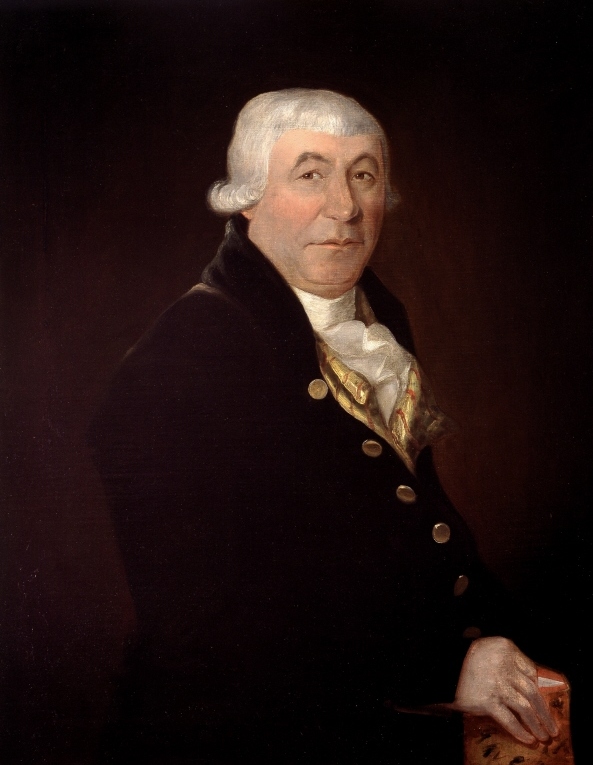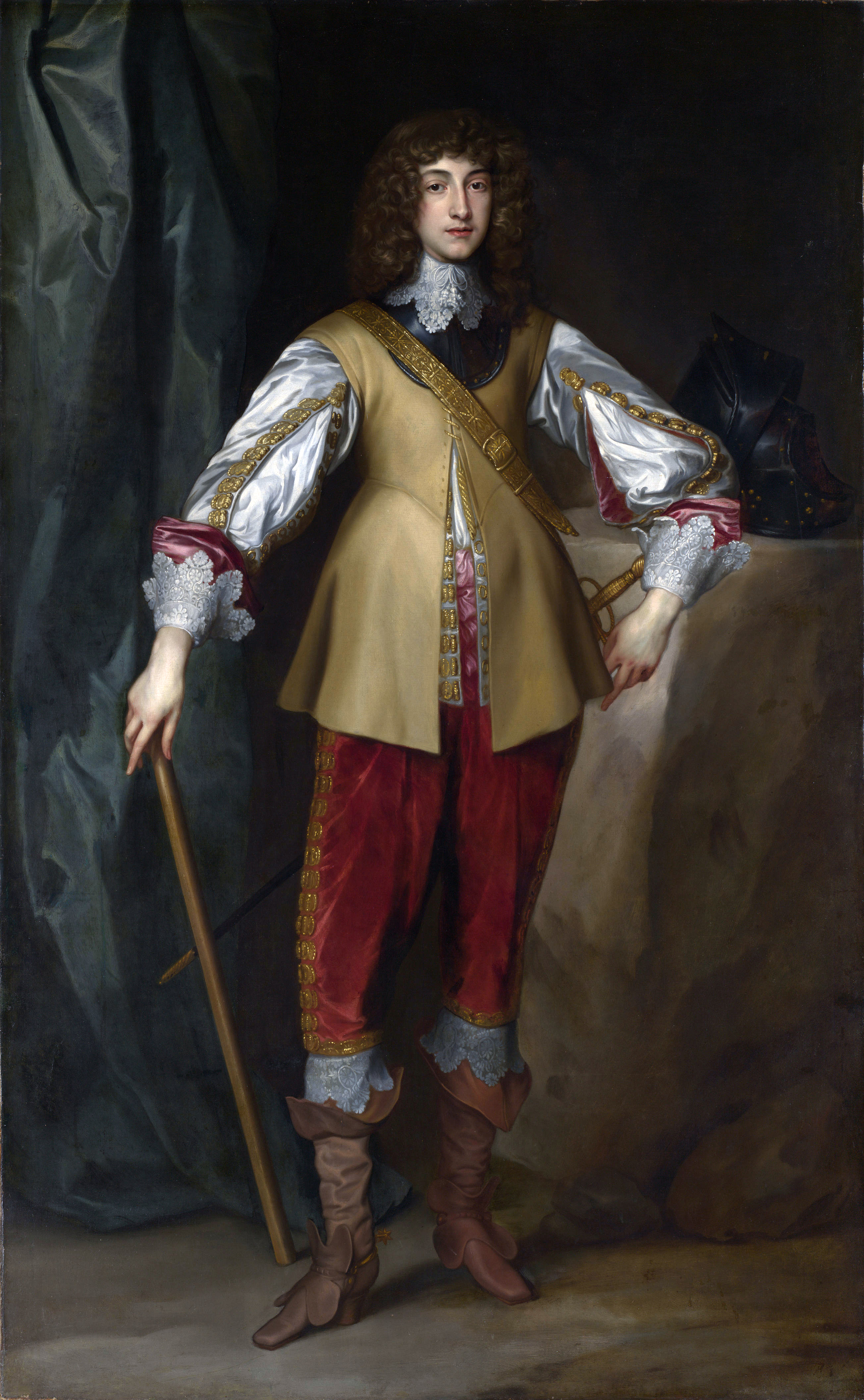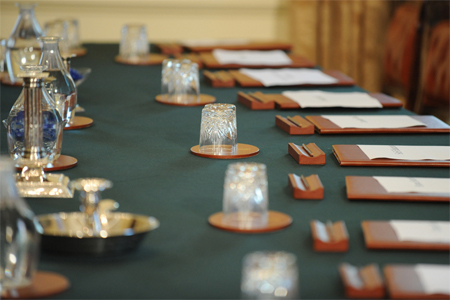|
Château Clique
Lower Canada Tories is a general name for individuals and parliamentary groups in Lower Canada, and later in the Province of Canada's division of Canada East, who supported the British connection, colonialism, and a strong colonial governor. They generally favoured assimilation of French-Canadians to British culture, laws, and the English language, and opposed democracy. Château Clique The Château Clique, or ', was a group of wealthy families in Lower Canada in the early 19th century. They were the Lower Canada equivalent of the Family Compact in Upper Canada. Like the Family Compact, the Château Clique gained most of its influence after the War of 1812. Most of its families were British merchants, but some were French Canadian seigneurs who felt that their own interests were best served by an affiliation with this group. Some of the most prominent members were brewer John Molson and James McGill, the founder of McGill University. Generally, they wanted the French Ca ... [...More Info...] [...Related Items...] OR: [Wikipedia] [Google] [Baidu] |
Tory
A Tory () is an individual who supports a political philosophy known as Toryism, based on a British version of traditionalist conservatism which upholds the established social order as it has evolved through the history of Great Britain. The Tory ethos has been summed up with the phrase "God, King (or Queen), and Country". Tories are Monarchism, monarchists, were historically of a high church Church of England, Anglican religious heritage, and were opposed to the liberalism of the Whigs (British political party), Whig party. The philosophy originates from the Cavaliers, a Royalism, royalist faction which supported the House of Stuart during the Wars of the Three Kingdoms. The Tories (British political party), Tories, a British political party which emerged during the late 17th century, was a reaction to the Whig-controlled Parliaments that succeeded the Cavalier Parliament. As a political term, ''Tory'' (a word of Irish origin) was first used during the Exclusion Crisis of 1678� ... [...More Info...] [...Related Items...] OR: [Wikipedia] [Google] [Baidu] |
John Molson
John Molson (28 December 1763 – 11 January 1836) was an English people, English-born brewer and entrepreneur in colonial Province of Quebec (1763–91), Quebec, which during his lifetime became Lower Canada. In addition to founding Molson Brewery, he is known for building the PS Accommodation, first Canadian steamship and the Champlain and St. Lawrence Railroad, first public Canadian railway. He was a president of the Bank of Montreal, and established Montreal General Hospital, a hospital, a hotel, and a theatre in Montreal. Molson was also the "leader" (provincial grand master) of the Freemasonry in Canada, freemason's lodge of Montreal from 1826 to 1833. His business dynasty, much of which he passed along to and was expanded by Molson family, his family, continues to remain influential in Canada. Early life John Molson was born in 1763, in the parish of Moulton, Lincolnshire, Moulton near Spalding, Lincolnshire, Spalding, Lincolnshire, England. His father John Molson senior (1 ... [...More Info...] [...Related Items...] OR: [Wikipedia] [Google] [Baidu] |
Lieutenant Governor Of Lower Canada
The lieutenant governor of Quebec (; , ) is the representative in Quebec of the monarch, who operates distinctly within the province but is also shared equally with the ten other jurisdictions of Canada. The lieutenant governor of Quebec is appointed in the same manner as the other provincial viceroys in Canada and is similarly tasked with carrying out most of the monarch's constitutional and ceremonial duties. The present and 30th lieutenant governor of Quebec is Manon Jeannotte, who has served in the role since January 25, 2024. Role and presence The lieutenant governor of Quebec is tasked with a number of governmental duties. Not among them, though, is delivering the Throne Speech, which sets the lieutenant governor of Quebec apart from the other Canadian viceroys. (Instead, new parliaments begin with the Opening Speech by the premier.) The lieutenant governor is also expected to undertake various ceremonial roles. For instance, upon installation, the lieutenant govern ... [...More Info...] [...Related Items...] OR: [Wikipedia] [Google] [Baidu] |
Cabinet (government)
A cabinet in governing is a group of people with the constitutional or legal task to rule a country or state, or advise a head of state, usually from the executive branch. Their members are known as ministers and secretaries and they are often appointed by either heads of state or government. Cabinets are typically the body responsible for the day-to-day management of the government and response to sudden events, whereas the legislative and judicial branches work in a measured pace, in sessions according to lengthy procedures. The function of a cabinet varies: in some countries, it is a collegiate decision-making body with collective responsibility, while in others it may function either as a purely advisory body or an assisting institution to a decision-making head of state or head of government. In some countries, particularly those that use a parliamentary system (e.g., the United Kingdom), the cabinet collectively decides the government's direction, especially in ... [...More Info...] [...Related Items...] OR: [Wikipedia] [Google] [Baidu] |
Legislative Council Of Lower Canada
The Legislative Council of Lower Canada was the upper house of the Parliament of Lower Canada from 1792 until 1838. The Legislative Council consisted of appointed councillors who voted on bills passed up by the Legislative Assembly of Lower Canada. The legislative council was created by the '' Constitutional Act''. Many of the members first called in the Council in 1792 had served as councillors in the Council for the Affairs of the Province of Quebec. The council came to be dominated by the Château Clique, members of the province's most powerful families who were generally interested in preserving the status quo. Both the upper and lower houses were dissolved on March 27, 1838 following the Lower Canada Rebellion and Lower Canada was administered by an appointed Special Council. Following the Act of Union in 1840, the Legislative Council of the Province of Canada was created in 1841. Legislative buildings * Old Parliament Building (Quebec) Old Parliament Building (Quebe ... [...More Info...] [...Related Items...] OR: [Wikipedia] [Google] [Baidu] |
Legislative Assembly Of Lower Canada
The Legislative Assembly of Lower Canada was the lower house of the bicameral structure of provincial government in Lower Canada until 1838. The legislative assembly was created by the Constitutional Act of 1791. The lower house consisted of elected legislative councilors who created bills to be passed up to the Legislative Council of Lower Canada, whose members were appointed by the governor general. Following the Lower Canada Rebellion, the lower house was dissolved on March 27, 1838, and Lower Canada was administered by an appointed Special Council. With the Act of Union in 1840, a new lower chamber, the Legislative Assembly of Canada, was created for both Upper and Lower Canada which existed until 1867, when the Legislative Assembly of Quebec A legislature (, ) is a deliberative assembly with the authority, legal authority to make laws for a Polity, political entity such as a Sovereign state, country, nation or city on behalf of the people therein. They are oft ... [...More Info...] [...Related Items...] OR: [Wikipedia] [Google] [Baidu] |
Constitutional Act Of 1791
The Constitutional Act 1791 ( 31 Geo. 3. c. 31) () was an act of the Parliament of Great Britain which was passed during the reign of George III. The act divided the old Province of Quebec into Lower Canada and Upper Canada, each with its own parliament and government. It repealed the '' Quebec Act 1774''. The act remained in force until 1841, when it was largely repealed by the ''Union Act, 1840'', which reunited the two provinces into the new Province of Canada. Some provisions relating to the clergy reserves remained in force. The remaining provisions of the act were repealed over time, with final repeal in 1966. History The act reformed the government of the Province of Quebec (1763–1791) to accommodate, amongst other Loyalists, the 10,000 United Empire Loyalists who had arrived from the United States following the American Revolution. The Province of Quebec, with a population of 145,000 French-speaking '' Canadiens'', was divided in two when the act took effect on ... [...More Info...] [...Related Items...] OR: [Wikipedia] [Google] [Baidu] |
Cultural Assimilation
Cultural assimilation is the process in which a minority group or culture comes to resemble a society's Dominant culture, majority group or fully adopts the values, behaviors, and beliefs of another group. The melting pot model is based on this concept. A related term is cultural integration, which describes the process of becoming economically and socially integrated into another society while retaining elements of one’s original culture. This approach is also known as cultural pluralism, and it forms the basis of a cultural mosaic model that upholds the preservation of cultural rights. Another closely related concept is acculturation, which occurs through cultural diffusion and involves changes in the cultural patterns of one or both groups, while still maintaining distinct characteristics. There are various types of cultural assimilation, including full assimilation and forced assimilation. Full assimilation is common, as it occurs spontaneously. Assimilation can also invol ... [...More Info...] [...Related Items...] OR: [Wikipedia] [Google] [Baidu] |
Act Of Union (1840)
The ''British North America Act, 1840'' ( 3 & 4 Vict. c. 35), also known as the ''Act of Union 1840'', () was approved by Parliament in July 1840 and proclaimed February 10, 1841, in Montreal. It abolished the legislatures of Lower Canada and Upper Canada and established a new political entity, the Province of Canada to replace them. Background Rebellion of Lower Canada After the War of 1812, the elected assembly of Lower Canada was dominated by French Canadians. A strong sense of nationalism sprang up among the francophones living in Lower Canada. The nationalists were led by Louis-Joseph Papineau, who was a part of what would later be known as the Patriot Party. One of its biggest demands was to determine how the colony's revenue would be spent. It challenged the authority of the upper house of the legislature. As well, the party sought to take control of civil services such as the executive council, which advised the sitting governor-general. All the demands were reje ... [...More Info...] [...Related Items...] OR: [Wikipedia] [Google] [Baidu] |
Anglican Church
Anglicanism, also known as Episcopalianism in some countries, is a Western Christianity, Western Christian tradition which developed from the practices, liturgy, and identity of the Church of England following the English Reformation, in the context of the Protestant Reformation in Europe. It is one of the largest branches of Christianity, with around 110 million adherents worldwide . Most are members of national or regional Ecclesiastical province#Anglican Communion, ecclesiastical provinces of the international Anglican Communion, one of the largest Christian bodies in the world, and the world's third-largest Christian communion. When united and uniting churches, united churches in the Anglican Communion and the breakaway Continuing Anglican movement were not counted, there were an estimated 97.4 million Anglicans worldwide in 2020. Adherents of Anglicanism are called ''Anglicans''; they are also called ''Episcopalians'' in some countries. The provinces within the Anglican ... [...More Info...] [...Related Items...] OR: [Wikipedia] [Google] [Baidu] |
Roman Catholicism
The Catholic Church (), also known as the Roman Catholic Church, is the List of Christian denominations by number of members, largest Christian church, with 1.27 to 1.41 billion baptized Catholics Catholic Church by country, worldwide as of 2025. It is among the world's oldest and largest international institutions and has played a prominent role in the history and development of Western civilization.Gerald O'Collins, O'Collins, p. v (preface). The church consists of 24 Catholic particular churches and liturgical rites#Churches, ''sui iuris'' (autonomous) churches, including the Latin Church and 23 Eastern Catholic Churches, which comprise almost 3,500 dioceses and Eparchy, eparchies List of Catholic dioceses (structured view), around the world, each overseen by one or more Bishops in the Catholic Church, bishops. The pope, who is the bishop of Rome, is the Papal supremacy, chief pastor of the church. The core beliefs of Catholicism are found in the Nicene Creed. The ... [...More Info...] [...Related Items...] OR: [Wikipedia] [Google] [Baidu] |
Common Law
Common law (also known as judicial precedent, judge-made law, or case law) is the body of law primarily developed through judicial decisions rather than statutes. Although common law may incorporate certain statutes, it is largely based on precedent—judicial rulings made in previous similar cases. The presiding judge determines which precedents to apply in deciding each new case. Common law is deeply rooted in Precedent, ''stare decisis'' ("to stand by things decided"), where courts follow precedents established by previous decisions. When a similar case has been resolved, courts typically align their reasoning with the precedent set in that decision. However, in a "case of first impression" with no precedent or clear legislative guidance, judges are empowered to resolve the issue and establish new precedent. The common law, so named because it was common to all the king's courts across England, originated in the practices of the courts of the English kings in the centuries fo ... [...More Info...] [...Related Items...] OR: [Wikipedia] [Google] [Baidu] |





